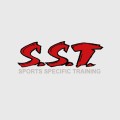Sprinting has been described as consisting of a series of phases: an acceleration phase (typically the first 10 metres), a transition phase, and a maximum velocity phase. For sports such as soccer, rugby, football and basketball, maximum velocity is not always attained, and repeated short sprints are more common. Taking this into consideration, the ability to develop speed in as short a time as possible (acceleration) may be of high importance to many athletes. It has been proposed that acceleration and maximum velocity are relatively separate and specific qualities.
An athlete’s ability to accelerate his or her body during sprinting is dependent on several factors. These factors include technique and the force production capability of the body, in particular the leg muscles. It has been shown that the technical aspects may have less importance for the acceleration phase of performance than for a typical sprinting event. For example, in many sports the athletes have to accelerate from a lying or crouching position, from landing on 1 leg and pivoting, from catching a ball, and so on. Therefore, the force capability of the muscle may be more important in improving acceleration of the athlete. This point was supported by R. Mann in his publication titled “The Elite Athletes Project: Sprints and Hurdles.” which stated that the ability to perform well in sprints over short distances is dependent on the ability to produce large amounts of force at crucial times.
A variety of methods are used to enhance force output. These methods include resistance training, plyometric training, and assisted and resisted sprinting techniques. For this article we will focus on resisted sprinting which involves athletes sprinting with added load. This load can come in different forms: weighted vests, sled-sprints, uphill sprinting and limb loading. More specifically, this article will focus on the towing of weighted devices such as sleds which is the most common method of providing towing resistance for the enhancement of sprinting.
It has been shown that the use of towing as a form of resistance may increase the load on the athlete’s torso and therefore require more stabilization. This training stimulus may increase pelvic stabilization, leading to a positive effect on sprint performance. Increased torso loads also cause an increased upper-body lean and increased thigh angle at both the beginning and the end of the stance phase. This increased thigh angle reflects the increased need for force production during the prolonged stance phase.
It is important to note that sprinting speed should not be decreased by more than 10% when adding resistance; adding too much resistance may alter running kinematics in ways that are not desirable. It is also maintained that sled-sprinting should not be employed when the desired training effect is neural (i.e. maximal velocity). Sled-sprinting is an effective method for a metabolic training effect (i.e. acceleration). Due to evidence that only the first 10 metres of a sprint have been designated as the acceleration phase, it is suggested that sled-sprints should be performed for distances no longer than 10 metres.
S.S.T. holds that a well implemented speed program should include a variety of methods to achieve desirable results (i.e. resisted sprints, assisted sprints, unassisted sprints and resistance training). Also, methods such as resisted and assisted sprints should be used sparingly, such as in the final or next-to-final block of an athlete’s periodized program.
To find out more information regarding SST’s upcoming Lightning camp please visit our website at www.sstcanada.com

